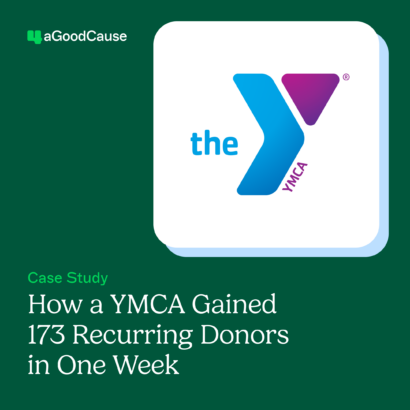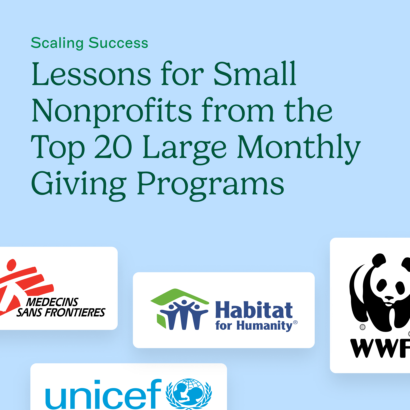Taking the plunge from organic (aka, free) social media content to paid social advertising can be stress-inducing to any organization. However, social media can – and will, if done correctly – serve as the perfect channel through which to illustrate your organization’s authenticity. Throwing some cash behind your content has the potential to magnify its reach and impact. This, in fact, is the primary difference between organic and paid social content.
Organic engagement isn’t going anywhere, but with paid content, you can further extend the reach of your message. Furthermore, with the varying updated algorithms across the social media platforms, content with more engagement, more comments, more shares, gets more favored than those that do not. Facebook, for example, is committed to distributed public content that is held to high standards of “encouraging meaningful interactions between people.” In their eyes, highly engaging content means that those meaningful interactions are taking place, and thus we see the content more often.
Read on, for a crash course in social media advertising, a bite-sized breakdown of each social platform’s advertising capabilities and what this can mean for your nonprofit. When honing in on your social advertising strategy, the first question you will need to answer is which channels your donors are living on. Keep in mind that not all channels may be the right fit for you and the goals of your organization.
LinkedIn
LinkedIn is known as the professional network; it is by far the most business-oriented in comparison to the other main social networking platforms. According to their website, more than 560 million professionals use the platform on a regular basis. Setting LinkedIn ads may be beneficial to your nonprofit if your intention is to reach businesses or business leaders, and/or build brand awareness amongst other organizations and nonprofits.
There are three types of ads on LinkedIn:
Sponsored Content
These native ads run in the LinkedIn news feed across desktop and mobile media. Using sponsored content, you can advertise to professionals as your nonprofit. Quick, punchy headlines (like your nonprofit’s call to action, for example) have the best engagement while larger images get more clicks.
Sponsored InMail
Sponsored InMail is essentially another branch of email marketing, aside from the fact that your messages will go directly to each user’s LinkedIn inbox. However, users will only receive said messages while they are actively using LinkedIn, which can help positively affect your bounce rates.
Text Ads
These ads are small messages that show up next to the LinkedIn news feed, just like sponsored content, but only appear on desktops (as opposed to the former, which also appear for mobile users).
Facebook remains the most widely-used social networking channel by users, across demographics and walks of life. With Facebook for Business and Facebook Pages, your nonprofit can fully utilize this platform for all it has to offer.
There are two types of paid advertising tactics you can implement on Facebook: Facebook ads and boosted posts.
Facebook ads
Facebook provides extremely detailed audience targeting options, which can make advertising on this platform particularly useful and maximizing your budget. In order to create your Facebook ads, you’ll need to know: your goal, why you’re running the ad; an understanding of who you want to reach; a clear, concise budget and projected spend; and visual imagery to use in your ad. From there, you’ll need to decide if your objective in running the ad is to raise awareness of your organization, get people to engage with your organization, or get people to close with your organization (be that a new donation, new volunteer, etc.).
Moreover, there are various Facebook ads to choose from, to customize your marketing strategy even further. These include photo ads, video ads, carousel ads (which look similar to a presentation, with various pictures or videos), slideshow ads, collection ads (which show up in users’ Facebook news feed), messenger ads (which appear in the home screen of Facebook Messenger, and are great for encouraging people to send you a Facebook message), and lead ads. These are only viewable to mobile users and include pre-populated contact forms. Lead ads would be very helpful if your objective in running the ad is to obtain more volunteers or interested publics for your nonprofit.
Facebook boosted posts
According to Facebook, these posts reach an extended audience beyond just the people who like your page. All you need to do is create a Facebook post as you normally would on your page, and then boost it from there with whatever amount of money you want to put behind it. You direct the audience, you set your budget.
Once the underdog of the social media community, Twitter has paved its way to one of the leading platforms amongst individuals and organizations – all in 280 characters or less. Twitter offers two ways to advertise on the platform: Twitter Promote and Twitter Ads, both of which are quite simple to understand.
Twitter Promote
With Twitter Promote, you are paying for Twitter to automatically promote your tweets for you. These tweets reach more people and often receive higher engagement among users.
Twitter Ads
Twitter Ads are used when you have more of a campaign in mind. In other words, these ads are compiled of a collection of tweets (say, 5-6) that all tell a cohesive message, that reach a greater audience with financial backing.
Instagram is the youngest of the social media platforms mentioned in this post, however, it is certainly not to be ignored. This platform is prominently used by Gen X, Millennials and Gen Z. One important caveat to note about this image-centric platform is that, as of 2012, Facebook owns Instagram. Therefore, much of the advertising capabilities are the same (photo ads, video ads, carousel ads, etc.). The exception is that Instagram also offers Stories Ads. These 15-second advertisements play in between the stories of profiles a user follows. As with everything we say about imagery and branding, make sure to keep your ads consistent so that people recognize your brand when they see it.
Deciding to move forward with paid social media advertising can seem daunting to even the most seasoned nonprofit pro, but with a little guidance, it can bring a huge ROI. Just remember to start small; don’t throw your entire marketing budget into one Twitter campaign that you think will make all the difference until you know what works for your organization and with your audiences. Most importantly, make sure to analyze your results after each campaign or ad set to see what really did work. Each platform has analytical tools right there for your use, that break your campaigns down to the last impression and cost per click.
Keep reading
Once a week or so we send an email with our latest article on online fundraising, nonprofit marketing and more. We never bug you; we just send you our latest piece of content. Subscribe now >



